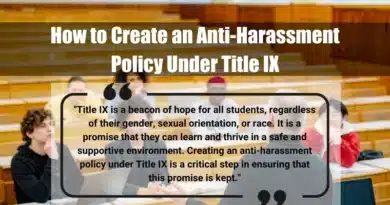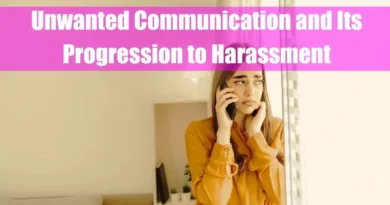I. Introduction
Sexual harassment stands as a pervasive and insidious threat to individual dignity and well-being. While its impact transcends societal boundaries, LGBTQ+ individuals face a heightened vulnerability to this form of abuse, stemming from a complex interplay of societal factors, discriminatory attitudes, and a lack of adequate support mechanisms. This comprehensive article delves into the intricacies of sexual harassment within LGBTQ+ or transgender communities, shedding light on its prevalence, unique risk factors, and far-reaching consequences. Furthermore, it outlines effective strategies for prevention, intervention, and advocacy, paving the way for a more inclusive and equitable society where LGBTQ+ individuals can thrive without fear of harassment or discrimination.
A. Defining LGBTQ+ Individuals and Sexual Harassment
The acronym LGBTQ+ encompasses a diverse spectrum of sexual orientations, gender identities, and expressions. It includes individuals who identify as lesbian, gay, bisexual, transgender, queer, and those who embrace a continuum of identities beyond the confines of traditional binary categories. Sexual harassment, on the other hand, refers to any form of unwelcome sexual attention or conduct that creates a hostile, offensive, or intimidating environment. It can manifest in various forms, including verbal harassment (such as slurs, jokes, and threats), unwanted physical contact (groping, kissing, touching), and quid pro quo harassment (demanding sexual favors in exchange for benefits or opportunities).
II. Understanding the Vulnerability of LGBTQ+ Individuals to Sexual Harassment
A. Causes of the Vulnerability of LGBTQ+ Individuals to Sexual Harassment
LGBTQ+ individuals face a heightened risk of sexual harassment due to a complex interplay of factors, including:
- Social Stigma and Marginalization: LGBTQ+ individuals often encounter prejudice and discrimination, fostering a climate of fear and silence that can make them more vulnerable to sexual harassment.
- Heteronormative Standards: Societal expectations that prioritize heterosexual relationships and gender norms can marginalize LGBTQ+ individuals, making them more susceptible to harassment based on their sexual orientation or gender identity.
- Lack of Support and Reporting Systems: LGBTQ+ individuals may face challenges in accessing supportive resources and reporting sexual harassment incidents due to fear of judgment, disbelief, or retaliation.
- Intersectionality of Identities: LGBTQ+ individuals with overlapping marginalized identities, such as those based on race, ethnicity, or socioeconomic status, may face compounded forms of discrimination and harassment.
- Limited Representation and Visibility: The underrepresentation of LGBTQ+ individuals in positions of power and influence can contribute to a lack of awareness and understanding of their experiences, increasing their vulnerability to harassment.
- Conversion Therapy and Anti-LGBTQ+ Rhetoric: Harmful practices like conversion therapy and anti-LGBTQ+ rhetoric can reinforce negative stereotypes and stigmatization, further marginalizing LGBTQ+ individuals and making them more susceptible to harassment.
- Violence and Discrimination in LGBTQ+ Communities: While LGBTQ+ communities provide support and solidarity, they can also be affected by internalized homophobia, transphobia, and biphobia, creating an environment where harassment may occur.
- Lack of LGBTQ+-Inclusive Policies and Training: Workplaces, educational institutions, and other settings may lack policies and training specifically addressing LGBTQ+ sexual harassment, leaving individuals without adequate protection or support.
- Misconceptions and Stereotypes: Harmful stereotypes about LGBTQ+ individuals, such as the association of homosexuality with promiscuity or the perception of transgender people as weak or vulnerable, can contribute to an environment where harassment is more likely to occur.
- Intergenerational Trauma: The ongoing legacy of discrimination and violence against LGBTQ+ individuals can create a cycle of trauma that may increase vulnerability to sexual harassment.
B. Unique Risk Factors for LGBTQ+ Individuals
Several factors contribute to the heightened vulnerability of LGBTQ+ individuals to sexual harassment. Homophobia and biphobia, deeply ingrained societal prejudices, serve as catalysts for harassment, normalizing discriminatory attitudes and behaviors towards LGBTQ+ individuals. Misconceptions about LGBTQ+ sexualities often lead to unwelcome sexual advances and objectification, reinforcing harmful stereotypes and perpetuating cycles of harassment. Additionally, the lack of safe spaces and support systems further isolates LGBTQ+ individuals, making them more susceptible to harassment and increasing the likelihood of underreporting incidents.
C. Forms of Sexual Harassment Experienced by LGBTQ+ Individuals

Sexual harassment manifests in various forms for LGBTQ+ individuals, often tailored to exploit their unique identities and experiences. Verbal harassment, including slurs, jokes, and threats, is a common form aimed at demeaning, intimidating, and marginalizing LGBTQ+ individuals. Unwanted physical contact, such as groping, kissing, and touching, is also prevalent, violating their bodily autonomy and creating a hostile environment. Quid pro quo harassment, involving threats or exchanges for sexual favors, particularly affects LGBTQ+ individuals in positions of powerlessness or economic dependence. Moreover, the creation of a hostile work or educational environment due to sexual orientation or gender identity can have a profound impact on LGBTQ+ individuals’ well-being and opportunities.
III. The Impact of Sexual Harassment on LGBTQ+ Individuals
The consequences of sexual harassment extend far beyond the immediate incident, leaving a lasting impact on the physical, psychological, and social well-being of LGBTQ+ individuals.
A. Psychological and Emotional Consequences
Sexual harassment can trigger a range of psychological and emotional distress among LGBTQ+ individuals. Anxiety, depression, and post-traumatic stress disorder (PTSD) are common sequelae, disrupting their mental health and overall quality of life. Feelings of low self-esteem, shame, and isolation often accompany the experience, further eroding their sense of self-worth and social connections. Fear of disclosure and retaliation can silence victims, preventing them from seeking help and perpetuating a cycle of victimization.
B. Physical Health Consequences
The impact of sexual harassment extends to the physical health of LGBTQ+ individuals. Sleep disturbances, headaches, and other physical ailments are prevalent symptoms, reflecting the profound emotional stress and trauma associated with these experiences. Substance abuse and risky sexual behaviors may emerge as coping mechanisms, further exacerbating health concerns. Self-harm and suicidal ideation are also alarmingly high among LGBTQ+ individuals who have experienced sexual harassment, highlighting the severity of the psychological impact.
C. Social and Academic Consequences

The pervasive nature of sexual harassment extends beyond psychological and physical health, impacting the social and academic lives of LGBTQ+ individuals. Avoiding social situations and academic activities becomes a coping mechanism for many, leading to social isolation and a diminished sense of belonging. Poor academic performance and higher dropout rates are often associated with sexual harassment, hindering educational opportunities and future career prospects. Limited career opportunities and economic disparities are further consequences, as LGBTQ+ individuals may face discrimination in hiring, promotions, and pay due to their sexual orientation or gender identity.
IV. Addressing Sexual Harassment in LGBTQ+ Communities
A. Prevention Strategies
Effectively addressing sexual harassment in LGBTQ+ communities requires a multi-pronged approach that encompasses prevention, intervention, and advocacy. Prevention forms the cornerstone of this approach, aiming to foster inclusive and respectful environments that embrace diversity and challenge discriminatory attitudes. By implementing comprehensive prevention strategies, we can proactively reduce the prevalence of sexual harassment and create a safer and more equitable society for LGBTQ+ individuals.
1. Educating and Sensitizing Individuals about LGBTQ+ Identities and Experiences:
A crucial step towards preventing sexual harassment is enhancing understanding and awareness of LGBTQ+ identities and experiences. This can be achieved through various educational initiatives, including workshops, pieces of training, and the distribution of informative resources. By dispelling myths, stereotypes, and misconceptions surrounding LGBTQ+ individuals, we can promote empathy, foster inclusive attitudes, and create a more welcoming environment for all.
2. Implementing Comprehensive Anti-Harassment Policies and Procedures:
Establishing clear and comprehensive anti-harassment policies and procedures is essential to prevent and address sexual harassment effectively. These policies should clearly define what constitutes sexual harassment, outline the procedures for reporting and investigating complaints, and specify the consequences for those found responsible. Additionally, anti-harassment policies, such as no-retaliation provisions, should protect victims to ensure they feel safe and supported in coming forward with their experiences.
How to Create an Effective Anti-Harassment Policy Under Title IX?
3. Creating Supportive and Inclusive Environments for LGBTQ+ Individuals:

Fostering supportive and inclusive environments for LGBTQ+ individuals is paramount to preventing sexual harassment and promoting their overall well-being. This involves creating spaces where LGBTQ+ individuals feel safe, respected, and valued. This can be achieved through various initiatives, such as establishing LGBTQ+ resource centers, forming LGBTQ+ student organizations, and training staff and faculty on creating inclusive environments. By cultivating a sense of belonging and reducing the risk of victimization, we can empower LGBTQ+ individuals to thrive without fear of harassment or discrimination.
B. Intervention and Support Mechanisms
When sexual harassment occurs, effective intervention and support mechanisms are crucial to ensure the safety and well-being of LGBTQ+ individuals. These mechanisms should be designed to address the immediate needs of victims, hold perpetrators accountable, and prevent future incidents from happening.
1. Providing Confidential Reporting Systems and Support Services for Victims
Victims of sexual harassment often face barriers to reporting their experiences due to fear of retaliation, isolation, and a lack of trust in traditional reporting systems. It is essential to establish confidential reporting systems and provide comprehensive support services specifically tailored to the needs of LGBTQ+ individuals to address these barriers. These systems should offer multiple reporting options, such as online reporting platforms, designated LGBTQ+ support staff, and third-party reporting options, to ensure accessibility and confidentiality. Additionally, comprehensive support services should be available to victims, including trauma-informed counseling, legal assistance, and emotional support groups, to help them navigate the aftermath of sexual harassment and promote their healing and well-being.
2. Conducting Thorough Investigations of Sexual Harassment Allegations
When allegations of sexual harassment are made, it is crucial to conduct thorough and impartial investigations to ensure that victims’ experiences are taken seriously and that perpetrators are held accountable. These investigations should be conducted by trained and experienced individuals knowledgeable about LGBTQ+ identities and experiences. The investigation process should be transparent, allowing victims to participate and provide their input while protecting the confidentiality of all parties involved. Upon completion of the investigation, appropriate disciplinary measures should be implemented, consistent with the severity of the harassment and the policies of the institution or organization.
3. Implementing Effective Disciplinary Measures for Perpetrators
Holding perpetrators of sexual harassment accountable is essential to deter future incidents and promote a culture of respect and inclusivity. Disciplinary measures should be commensurate with the severity of the harassment and should be implemented fairly and consistently. These measures may include verbal or written reprimands, training or counseling requirements, suspension or termination of employment, and, in severe cases, legal action. By implementing effective disciplinary measures, we can send a clear message that sexual harassment will not be tolerated and that perpetrators will be held accountable for their actions.
C. Role of Advocacy and Allyship

Addressing sexual harassment in LGBTQ+ communities extends beyond prevention and intervention, requiring a broader societal shift that challenges discrimination, promotes inclusivity, and upholds the rights of LGBTQ+ individuals. Advocacy and allyship play a pivotal role in fostering this societal transformation and creating a world where LGBTQ+ individuals can thrive without fear of harassment or marginalization.
1. Advocating for LGBTQ+ Rights and Protections in Legal and Policy Spheres
Legal and policy reforms are crucial to ensure that LGBTQ+ individuals have equal access to justice and protection from discrimination. Advocating for comprehensive anti-discrimination laws, hate crime legislation, and equitable employment practices creates a legal framework that safeguards LGBTQ+ individuals from harassment and promotes their fundamental rights. Actively engaging in legislative processes, supporting LGBTQ+ rights organizations, and educating policymakers are essential steps in advancing legal protections for LGBTQ+ individuals.
2. Fostering Allyship and Creating Bystander Intervention Training Programs
Allyship, the act of standing in solidarity with and supporting LGBTQ+ individuals, is a powerful force in combating sexual harassment and fostering inclusive environments. Bystander intervention training programs empower individuals to recognize, respond to, and prevent sexual harassment. These trainings equip individuals with the skills and knowledge to intervene safely and effectively when witnessing harassment, creating a culture of collective responsibility and accountability.
3. Promoting Cultural Shifts that Challenge Discrimination and Promote Inclusivity
Cultural shifts that challenge discriminatory attitudes and promote inclusivity are essential to creating a society where LGBTQ+ individuals can live authentically and without fear of harassment. Challenging harmful stereotypes, promoting empathy and understanding, and celebrating LGBTQ+ identities through public education campaigns, media representation, and community events are crucial to fostering a more inclusive and respectful society.
Addressing sexual harassment in LGBTQ+ communities requires a multifaceted approach that encompasses prevention, intervention, advocacy, and allyship. By implementing comprehensive prevention strategies, providing robust support systems, and promoting cultural shifts, we can create a society where LGBTQ+ individuals can live free from harassment and embrace their identities without fear. The journey towards a more equitable and just society demands our collective attention and action, ensuring that all individuals can thrive in a world that respects and celebrates diversity.
V. Conclusion
Sexual harassment casts a long shadow over the lives of LGBTQ+ individuals, inflicting psychological, physical, social, and academic consequences. Understanding the unique vulnerability of LGBTQ+ individuals to sexual harassment is crucial to designing effective prevention, intervention, and advocacy strategies. By fostering inclusive environments, providing robust support systems, and promoting cultural shifts, we can create a society where LGBTQ+ individuals can live authentically and thrive without fear of harassment or discrimination. The journey towards a more equitable and just society requires continued collective action and a steadfast commitment to upholding the dignity and well-being of all individuals.
Addressing sexual harassment in LGBTQ+ communities is an ongoing responsibility that demands our collective attention and action. We must continue to challenge discriminatory attitudes, promote inclusive environments, and provide robust support systems for LGBTQ+ individuals. Let us unite in solidarity, creating a society where everyone can live free from harassment and embrace their identities without fear.
VI. Useful Resources for Victims of LGBTQ+ Sexual Harassment

Here’s a list of helpful resources for victims of LGBTQ+ sexual harassment:
A. National Organizations
- The National Sexual Assault Hotline: 1-800-656-HOPE
- The Rape, Abuse & Incest National Network (RAINN): https://www.rainn.org/
- The Trevor Project: 1-866-488-7386
- The National LGBTQ Task Force: https://www.thetaskforce.org/?utm_source=pocket_collection_story
- The Human Rights Campaign: https://www.hrc.org/about
B. Online Resources
- RAINN’s LGBTQ Survivors of Sexual Violence: https://www.hrc.org/resources/sexual-assault-and-the-lgbt-community
- The Human Rights Campaign’s Brief Guide to Getting Transgender Coverage Right: https://www.hrc.org/resources/transgender
- The National Center for Transgender Equality’s Resources on Sexual Harassment: https://transequality.org/
- The Advocates for Youth’s LGBTQ Resources for Professionals: https://www.advocatesforyouth.org/resources-tools/
- The American Psychological Association’s Resources on LGBTQ+ Issues: https://www.apa.org/pi/lgbt/resources
C. Legal Resources
- The National Center for Law and Economic Justice: https://nclej.org/
- The ACLU’s LGBTQ+ Rights Project: https://www.aclu.org/news/by-issue/lgbtq-rights
- The Lambda Legal Defense and Education Fund: https://philanthropynewsdigest.org/features/nonprofit-spotlight/lambda-legal-defense-and-education-fund
D. Additional Tips
- If you or someone you know has been sexually harassed, it is important to reach out for help. Many resources are available; you do not have to go through this alone.
- You can also report sexual harassment to the appropriate authorities, such as your employer, school, or law enforcement agency.
- It is important to remember that you are not alone, and some people care about you and want to help.









